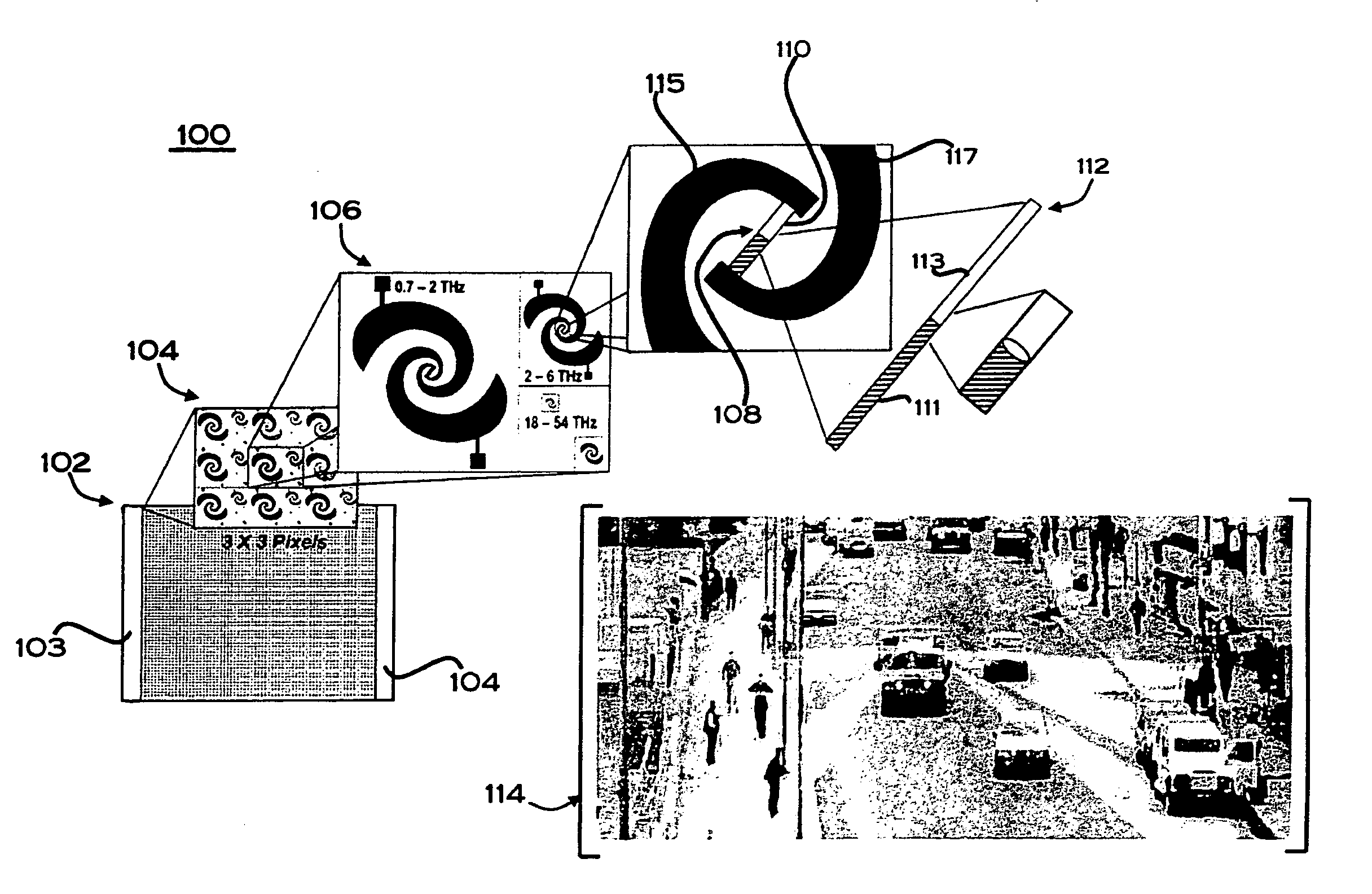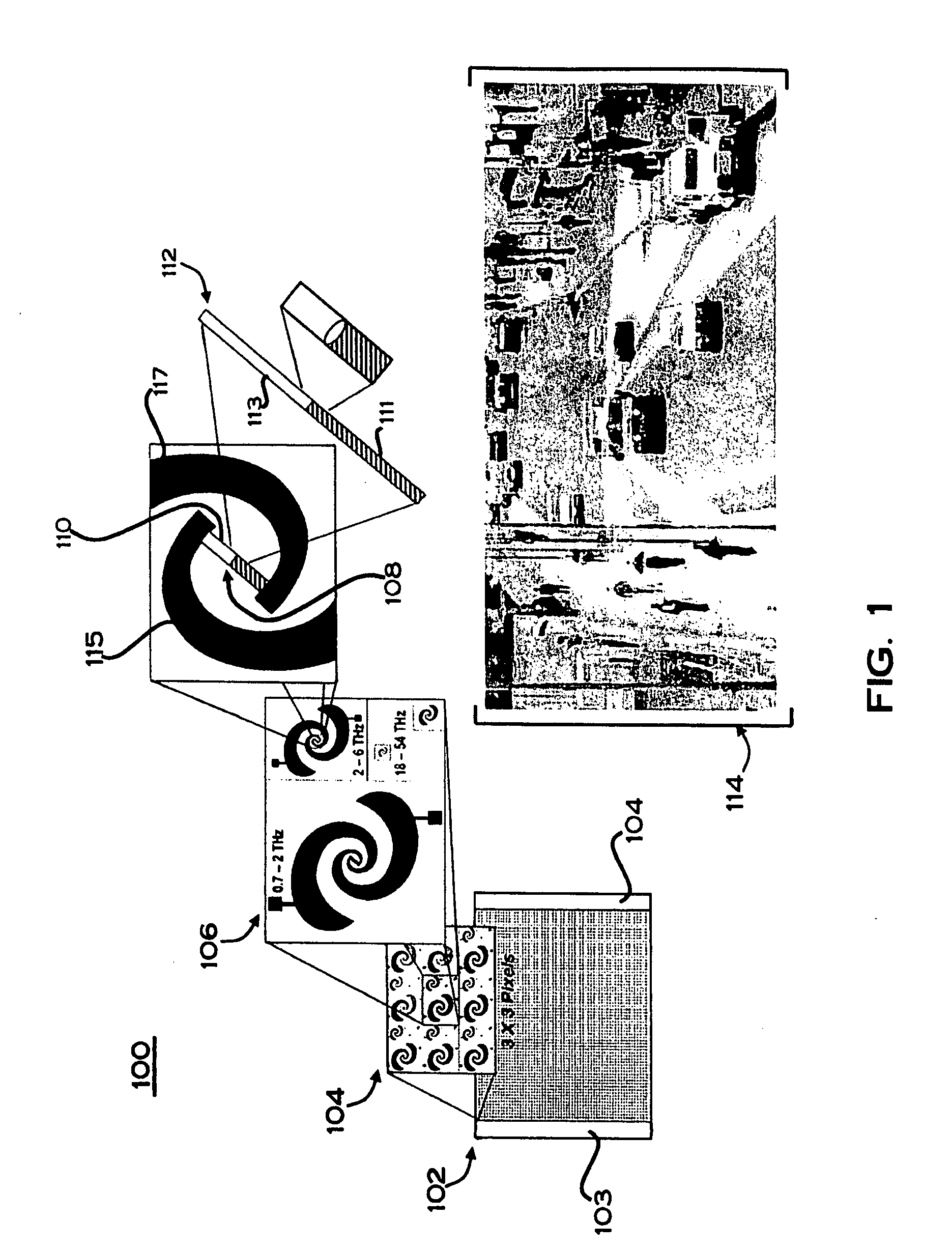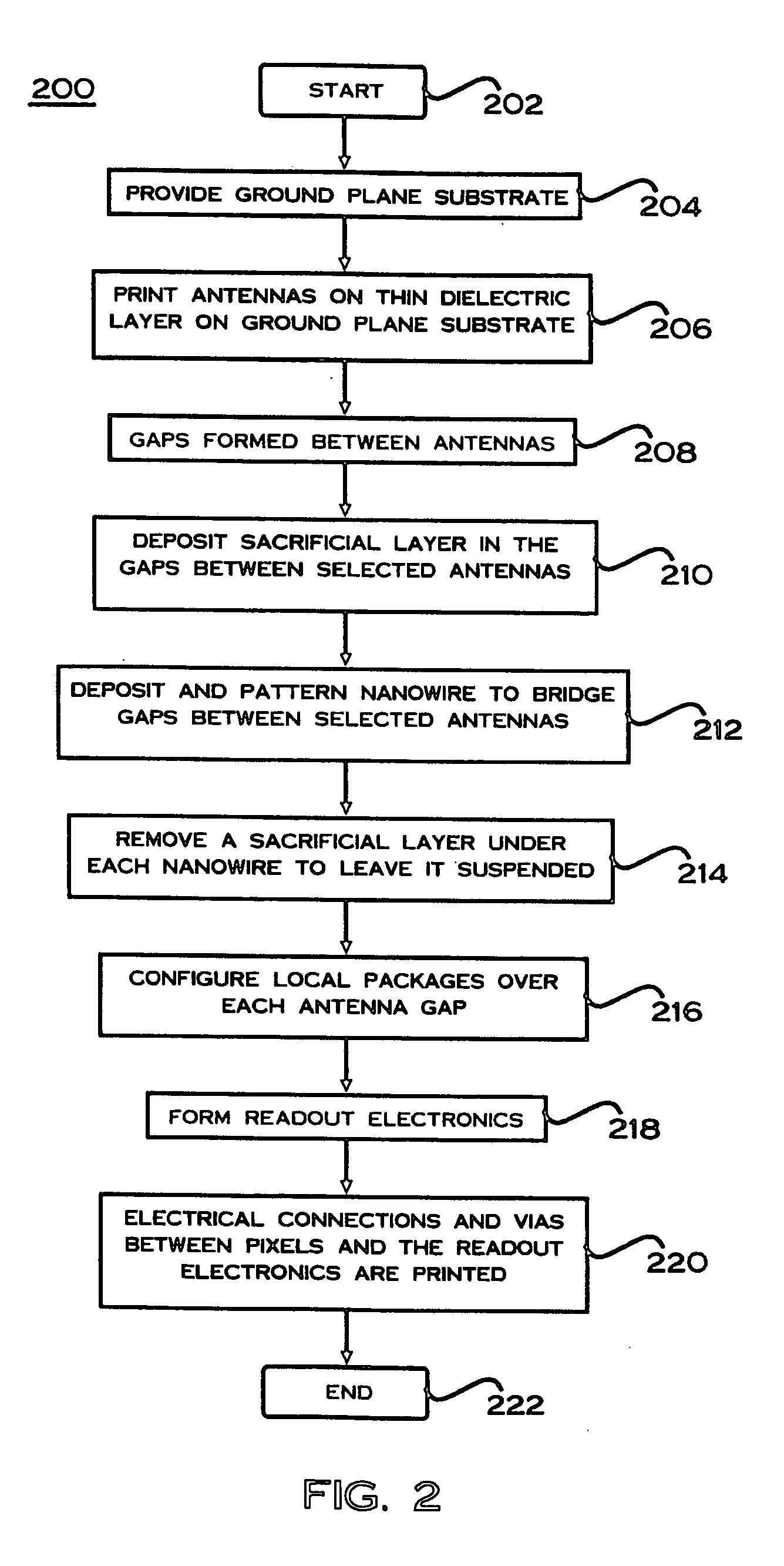Nanowire multispectral imaging array
a multi-spectral imaging and array technology, applied in the field of infrared detectors and imaging arrays, can solve the problems of high vacuum, inability to meet the sensitivity of individual microbolometer pixels, and inability to respond uniformly to infrared radiation, so as to increase the manufacturability of multi-spectral imaging array systems and reduce thermal time constants , the effect of high frame ra
- Summary
- Abstract
- Description
- Claims
- Application Information
AI Technical Summary
Benefits of technology
Problems solved by technology
Method used
Image
Examples
Embodiment Construction
[0021]The particular values and configurations discussed in these non-limiting examples can be varied and are cited merely to illustrate at least one embodiment of the present invention and are not intended to limit the scope of the invention.
[0022]The embodiments disclosed herein describe how to obtain a high frame rate for a high pixel count by utilizing nanowires as the microbolometer sensing element. The nanowire(s) allows for using antennas printed on the same dielectric substrate with a size covering a range of 0.8-54 THz because it effectively replaces the microbridge and can be scaled in length to match the gap between the antennas. Moreover the very small diameter of the nanowire decreases the thermal time constant and therefore increases the read-out rate.
[0023]At the same time, the nanowire small diameter decreases the ambient gas cooling speed relative to the read-out rate in the package which makes the vacuum package more manufacturable. The material properties of the n...
PUM
 Login to View More
Login to View More Abstract
Description
Claims
Application Information
 Login to View More
Login to View More - R&D
- Intellectual Property
- Life Sciences
- Materials
- Tech Scout
- Unparalleled Data Quality
- Higher Quality Content
- 60% Fewer Hallucinations
Browse by: Latest US Patents, China's latest patents, Technical Efficacy Thesaurus, Application Domain, Technology Topic, Popular Technical Reports.
© 2025 PatSnap. All rights reserved.Legal|Privacy policy|Modern Slavery Act Transparency Statement|Sitemap|About US| Contact US: help@patsnap.com



